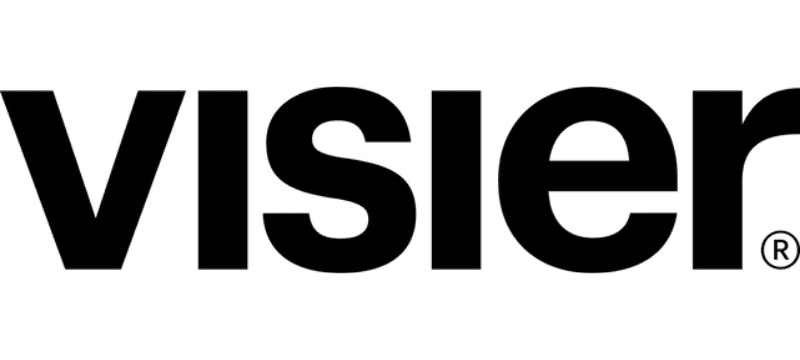People-first organizations: Their purpose and why becoming one matters now more than ever
Understand why data and trend-predicting are going to become central facets of HR practice.
Get to hear more about why creating a purposeful, people-first organization is the key to success.
Hear more about what HR is going to come up against in the months and years ahead.



With the tough labor market ongoing, HR has to get its head around what people want from work. Here, data can be invaluable. But it can be a mammoth task to reconcile lots of different platforms and spreadsheets, align that data with market trends, and then turn that into a people plan that puts them first, creates a solid sense of purpose, and is robust enough to navigate future challenges.
To find out more on this topic, Kate Graham Head of Content Labs and Insights at UNLEASH is joined by Dr. Daniel Thorniley, President at DT Global Business Consulting, and Ian McVey, SVP and General Manager, EMEA at Visier to hear more about what’s going to come in the months ahead and why charting your organization’s through new territory is a crucial HR role.
“The war on talent is here to stay. There are increasingly more jobs and fewer people to fill them. People analytics has never been more important and as a capability it not only gives HRDs a strategic seat at the CEOs table but it also is an enabling differentiator to ensure companies in the 21st century are People First, that employees are seen as assets and not resources, valuable and not expendable. The companies that understand this will be the winners in the future.
– Ian McVey, SVP and General Manager, EMEA, Visier
Watch on-demand to:
● Understand the HR metrics that matter for solving the key business challenges of today – and tomorrow.
● Hear how being a people-first organization is leading to strong performance and success.
● Takeaway your exclusive checklist of people data must-haves to put potential solutions to the test!
What risks is HR facing?
Thorniley kicked off the webinar by charting the risk landscape that businesses must now contend with. With geopolitics now less assured than it was — from the US internal political landscape to Russian aggression — he explained that many businesses are facing up to the reality that they cannot ignore what impact global factors have on their ability to hire, engage, and manage people.
In fact, Thorniley added that global factors such as these could precipitate an even bigger labor shortage. Perhaps not what the HR function wants to hear about two years of facing up to the so-called Great Resignation and more people wanting to go it alone.
However, face up to this reality HR must. And to deal with this landscape effectively McVey added that HR has to move from being reactive to strategic, and grasp just how much global paradigms impact the day job (as everything, thanks to globalization, is deeply interlinked).
Yet, because this system is so complex McVey said that HR must also get better at sitting with uncertainty, focussing on what it can actually impact, and learning to manage both upwards (business demands, macro factors) and down (people, intra-organizational interactions) and not getting too caught up in what it can’t control.
What can HR influence?
With huge stumbling blocks to overcome, the webinar conversation turned to a discussion of what HR can, and should do, to help manage these impacting factors.
One thing, explained McVey, is that by facing up to the truth of the present and likely future labor shortages — precipitated by a falling birth rate, a rise in the number of available jobs, and global economic shifts (such as the markets tech back office suppliers choose to serve) — Thorniley said HR can begin to think strategically about solving them.
One tool it can wield, he said, was purpose. With incoming work-ready demographics being seemingly more purpose-driven, if HR can create a compelling story and proposition around purposeful work, which delivers outside of financial reward, it is more likely to attract and retain the talent it needs.
Again, this requires HR to understand why it would be creating a purpose. A quick glance at the labor market as it stands gives that reason: with the employer-employee dynamic shifting in favor of the employees, it is now inarguable that employers must deliver more on what they want (personalization, autonomy, better work-life balance) and purpose can be a tool that helps with this which can set them up well to come out on top in the ongoing war for talent.
What tools can help HR?
Yet, as most in HR know, these step changes cannot simply be about changing top-level direction. They have to understand how to implement, measure the impact, and understand where tweaks and changes are needed most. Here, metrics come out on top as a tool to use. HR has to get used to measuring and listening to what employees want, looking at management effectiveness, engagement scores, stats on leavers and joiners, and pay levels, too. It really needs to use HCM/HRIS data as much as it can in order to understand itself.
In fact, as McVey explained, data can really help HR understand where it needs to go and how to best help people and the business. And, if it can start to turn this data into a coherent analytics language, it can go be more agile in its response to questions and issues and be more specific about where problems are e.g. exactly where it is in the interview process candidates drop out.
McVey argued that people analytics is where there is most growth room for HR, too. It’s where they can get a seat at the table and truly show their worth to the organization. This is because it is an organization’s people who are the biggest cost and represent that business at all stages of the customer journey, so understanding them is key. And it is people analytics therefore that can bridge that understanding gap and set up businesses for success.
Yet merely saying ‘we’re now an analytics-powered people organization’ doesn’t cut it. HR must learn to use analytics in a strategic manner, moving away from being merely responsive, and choosing the right technology to be able to parse the huge amount of people data it will have to create actionable insights going forward.
Understanding it all
HR has also got to understand the multi-dimensional shape of what it will be facing on the people landscape as we move into the future.
Understanding the role of money will always be important but also understanding that it will be less of a driver than it once was with younger generations seemingly interested in other motives to work. This ties into the digitalization of work, both McVey and Thorniley agreed, which is enabling workers to choose their own working patterns, and working locations, break down hierarchies, and reimagine work. Again, both warned its crucial HR gets its head around this. There will also be changes to what is considered a good and successful business.
Again, it all begs the question: how can HR keep up with understanding these changes? All speakers agreed that technology has a clear role to play here. It can help organizations stay aware of internal and external factors influencing their organization and also help with solutions, too: by giving access to new labor markets around the globe, keeping tabs on all workers, driving productivity, and even helping people love their work.
It can also underpin — as long as it is not seen as a sole panacea — working environments that have healthy cultures, where people want to work, and where people feel like they can develop and grow. Again, usually by delivering to HR good data which can inform it how to improve organizational life, the interactions people have, and the individual and organizational direction of travel.
In fact, as McVey concluded, technology will be crucial in helping HR understand the complex future of work, and of organizational life, and figuring out a positive way forward. It is technology, especially that which can provide good data, that will allow the function to create a map to navigate going forwards and become a data-driven function that drives people to make good choices.
